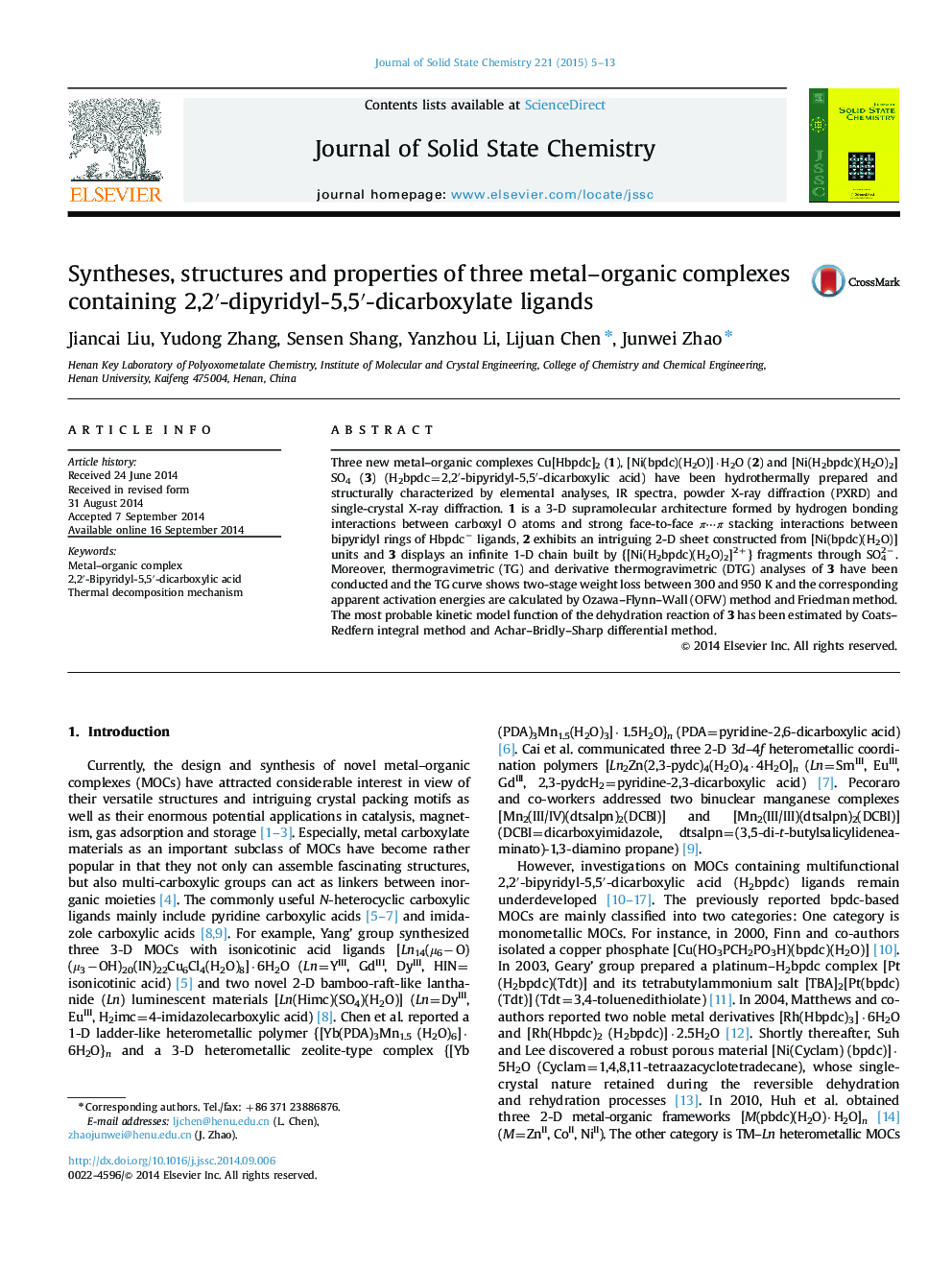| Article ID | Journal | Published Year | Pages | File Type |
|---|---|---|---|---|
| 1329597 | Journal of Solid State Chemistry | 2015 | 9 Pages |
•Metal–organic complexes containing 2,2′-dipyridyl-5,5′-dicarboxylate ligands.•3-D supramolecular architecture.•Thermal decomposition kinetics.
Three new metal–organic complexes Cu[Hbpdc]2 (1), [Ni(bpdc)(H2O)]·H2O (2) and [Ni(H2bpdc)(H2O)2]SO4 (3) (H2bpdc=2,2′-bipyridyl-5,5′-dicarboxylic acid) have been hydrothermally prepared and structurally characterized by elemental analyses, IR spectra, powder X-ray diffraction (PXRD) and single-crystal X-ray diffraction. 1 is a 3-D supramolecular architecture formed by hydrogen bonding interactions between carboxyl O atoms and strong face-to-face π⋯π stacking interactions between bipyridyl rings of Hbpdc− ligands, 2 exhibits an intriguing 2-D sheet constructed from [Ni(bpdc)(H2O)] units and 3 displays an infinite 1-D chain built by {[Ni(H2bpdc)(H2O)2]2+} fragments through SO42−. Moreover, thermogravimetric (TG) and derivative thermogravimetric (DTG) analyses of 3 have been conducted and the TG curve shows two-stage weight loss between 300 and 950 K and the corresponding apparent activation energies are calculated by Ozawa–Flynn–Wall (OFW) method and Friedman method. The most probable kinetic model function of the dehydration reaction of 3 has been estimated by Coats–Redfern integral method and Achar–Bridly–Sharp differential method.
Graphical abstractThree metal–organic complexes containing 2,2′-dipyridyl-5,5′-dicarboxylate ligands were synthesized and the thermal decomposition kinetics were investigated.Figure optionsDownload full-size imageDownload as PowerPoint slide
